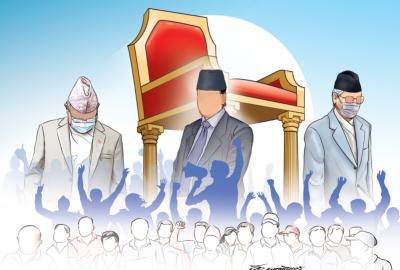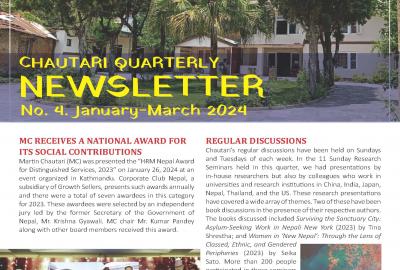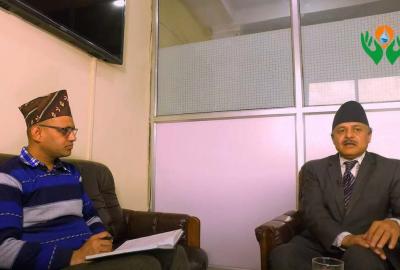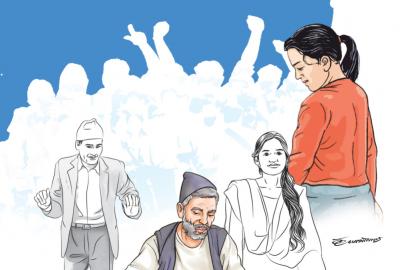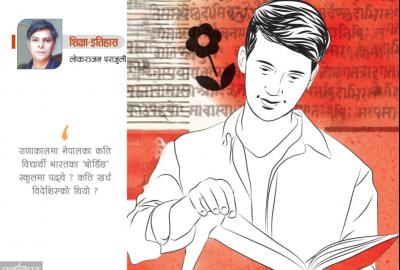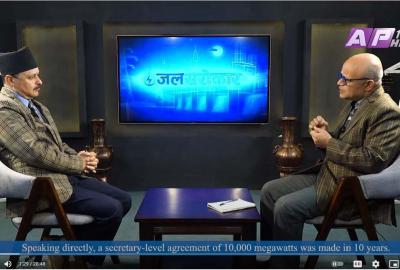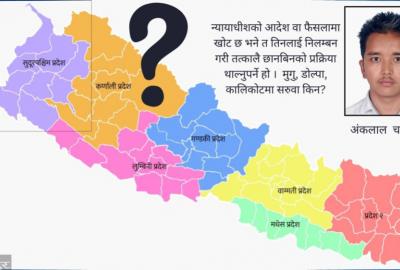Sep 28, 2015- There have been major changes in the higher education landscape in Nepal since the end of absolute monarchical rule in 1990. On the demand side, the number of Nepali students going to colleges inside Nepal and abroad has increased many folds. As has been argued for the case of India by sociologist Satish Deshpande, this demand growth “is fuelled…by a ‘demographic bulge’ in the age structure” and “by expanded access to schooling.” On the supply side, one major change has been the realisation of the idea of multiple universities. Bringing the era of the monopoly of Tribhuvan University (TU, established 1959) to an end, several new universities—now numbering nine and several more in the pipeline—have been established in the country since the early 1990s.
Rise of private colleges
Concurrent with the adoption of the idea of multiple universities, the higher education sector was liberalised allowing the private sector to open all kinds of colleges that are affiliated to one or more universities. This development can be described as a hybrid model of higher education growth whereby mostly public universities have grown in size by providing affiliation to private colleges which manage their own faculty, teaching programmes and fees but follow the curricula and examination system of the universities that they are affiliated to. While public-funded universities continue to run undergraduate programmes at their own constituent colleges, the number of such colleges has been dwarfed by the number of new privately initiated colleges. For instance, during the last academic year, TU had 60 constituent colleges of its own and 1,053 affiliated colleges. The latter were either community-supported not-for-profit private or for-profit private colleges.
This means less than six percent of the colleges that award degrees from TU are the university’s constituent colleges. Information provided in TU’s website suggests that more than 63 percent of TU’s students study in its affiliated colleges. Recent trends suggest that the percentage of students in private colleges is going to increase even further in the years ahead not just at TU but also at Nepal’s other universities. Hence, in terms of both the number of colleges in operation and the number of students enrolled, clearly there has been a significant shift from public-funded to privately-catered education, especially undergraduate education.
The private colleges that have come up in the past 25 years are located both in the urban and rural areas. While many are concentrated in major cities such as Kathmandu, Pokhara and Biratnager others have also been opened in relatively non-urbanised parts of the country. These colleges have been initiated by various types of entrepreneurs, some of whom are long-time educationists whereas others are businessmen with a clear agenda of profit. Although its extent is not publicly known, it is suspected that many national- and district-level leaders from all the major political parties of Nepal have invested in private-sector colleges. While the implications of such linkages (beyond real and potential conflicts of interest) have not been understood in detail, the current scenario is clearly the result of the decision to open higher education to the private sector in the early 1990s. This has come about at a time when the demand for higher education in the country has increased many folds while public spending on higher education as a percentage of total annual state budget has been decreasing.
Paradoxical reform
There have been several reform initiatives in higher education in Nepal over the past 25 years but they have paid scant attention to private colleges. For instance, in the Second Higher Education Project (SHEP, 2007-2014), reform initiatives focused on granting autonomy to a few of TU’s constituent colleges, augmenting the access to higher education of students from communities which have been traditionally under-represented in undergraduate education in Nepal and the starting of a quality assurance and accreditation system at the University Grants Commission. The autonomy programme was successful mostly in paper since the four newly autonomous constituent colleges of TU do not enjoy any academic autonomy but only a limited degree of financial and administrative autonomy. By July 2014 some 12 colleges had completed the evaluation process and had received quality accreditation from the Commission. During the life of SHEP, some 89 community owned private colleges also received performance-based institutional grants that they could use for institutional and other developments from resources formerly earmarked for the initial project target of achieving six autonomous colleges (which was revised to three in 2011 as part of a major re-structuring of SHEP).
We see a paradox at the heart of previous efforts to reform higher education in Nepal. Whereas most of the reform projects have aimed at reforming TU and its constituent campuses, the major growth in higher education over the past 25 years has come from the participation of the private sector, both in its not-for-profit (community) and for-profit avatars. Notwithstanding some engagement with these colleges (through block grants and quality accreditation) and the call for public-private partnership in the proposed new higher education policy, the erstwhile reform projects have not really addressed the concerns of the private colleges to any substantial extent. Without appropriate reform interventions that enhance the quality of teaching and educational environment in these private colleges where more and more of Nepali students are enrolled, higher education reforms will not be successful.
For reforms in higher education to work, they will have to be designed after a deep understanding of the multifarious roles of private colleges in the contemporary higher education landscape. However, there is very little public knowledge about the dynamics of private higher education in Nepal beyond some anecdotes and newspaper reports. Consider these questions: what has been the growth patterns (e.g. no of institutions, disciplines offered, geographical spread, etc.) of private colleges in Nepal? What has been the financial dynamics that support private colleges in Nepal and how have they changed since the mid-1990s? Who are the investors and what is prompting them to invest in higher education institutions (as opposed to possibly more lucrative real-estate deals)? What has been the role of formal financial institutions in such investments? Which cost-recovery mechanisms that private college have adopted impinge upon issues related to access to higher education in Nepal? What are the social outcomes of investments made by political actors and their representatives? What kinds of policies are needed to address various types of inequalities created by cost-recovery models of higher education?
Need for research
We neither know the answer to the above questions nor to many other equally important questions: what are the links between new courses taught in private colleges and the market forces? How have the portfolio of courses made available by private colleges altered the disciplinary choices available to the college students in the social sciences and the humanities? What self-capacity building exercises do teachers in private colleges want to enhance their in-class performances? What kinds of horizontal quality assuring mechanisms are needed beyond a centralised quality accreditation body that has been proposed in the new higher education policy?
We are not proponents of the private sector’s full involvement in higher education. Quite the contrary, we think that the state needs to clearly subsidise (through various incentives) all programmes in higher education that are crucial to the production of a critical public citizenry. However, we also recognise that without good answers to the above questions, efforts to reform higher education in Nepal will continue to be misplaced. Hence there is the need for good empirically-strong research on the private dynamics of higher education in Nepal.
The writers are researchers at Martin Chautari
Source: The Kathmandu Post, 28 September 2015, p. 6.
http://kathmandupost.ekantipur.com/news/2015-09-28/changing-focus.html
 Lokranjan Parajuli
Lokranjan Parajuli
